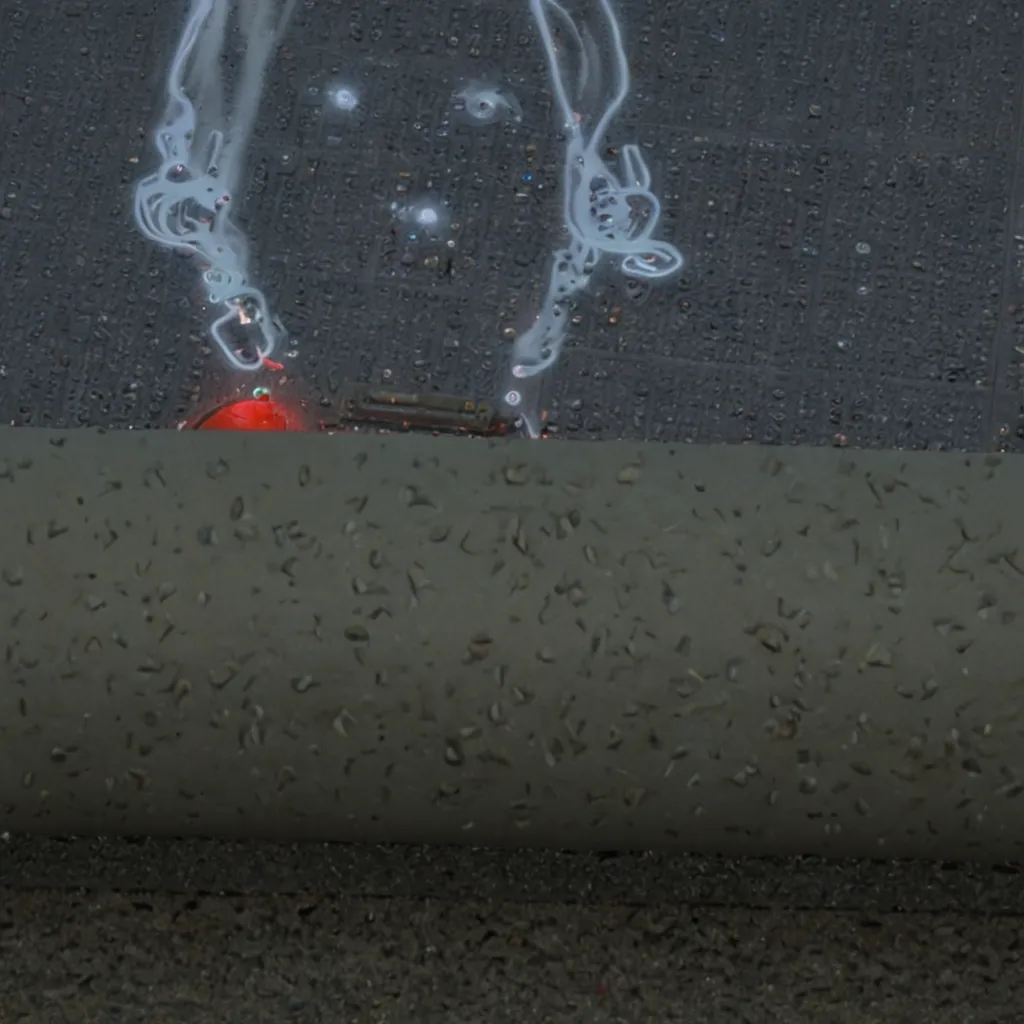kike es un viajero entre del tiempo, pero su capacidad dura solo venticuatro horas, pero un dia queda atrapado en medio de la guerra fria y no sabe como retornar a al tiempo que le corresponde.
¡Qué situación tan complicada para Kike! Imagino la angustia de estar atrapado en plena Guerra Fría, con el reloj de su capacidad de viaje en el tiempo marcando la cuenta atrás. Veo a Kike, un hombre de unos 30 años, con el pelo castaño revuelto y una expresión de preocupación en su rostro. Viste un traje ligeramente desfasado, que denota su procedencia temporal, quizás una gabardina oscura y un maletín desgastado que contiene sus herramientas, o lo que queda de ellas. Se encuentra en una calle desierta de Berlín, con edificios grises y sombríos a su alrededor, el aire impregnado de tensión y la amenaza latente de un conflicto que podría acabar con él. Tiene que encontrar una forma de volver a su tiempo antes de que se agote su capacidad, pero ¿cómo? Quizás necesita encontrar un objeto o una persona que le permita restablecer su viaje temporal, o quizás un lugar con una energía especial que le ayude a reactivar sus poderes.

La situación es desesperada, pero Kike es un viajero del tiempo, ¡seguro que encontrará una solución!
¿Qué estrategia podría usar Kike para sobrevivir en la Guerra Fría hasta que encuentre una solución?
La situación de Kike es desesperada. Atorado en la Guerra Fría con un límite de tiempo de 24 horas para volver a su época, necesita una estrategia de supervivencia que maximice sus posibilidades de encontrar una forma de regresar. Su prioridad absoluta es la supervivencia hasta que pueda activar su dispositivo temporal (si es que lo tiene) o encontrar una manera de regresar.
Para sobrevivir, Kike debería enfocarse en lo siguiente:
-
Mantenerse oculto: La Guerra Fría era un período de alta vigilancia, tanto por parte de los aliados como de los soviéticos. Kike debe evitar llamar la atención, mezclarse con la multitud y evitar cualquier comportamiento sospechoso. Un atuendo discreto y un perfil bajo son cruciales.
-
Buscar refugio: Necesita un lugar seguro donde pueda pasar desapercibido y planificar su siguiente movimiento. Un albergue, un edificio abandonado o incluso un sótano podrían servir. La clave es la discreción.
-
Obtener recursos: Necesita comida, agua y, si es posible, algún tipo de comunicación. Robar es arriesgado, por lo que la caridad o encontrar recursos abandonados serían sus mejores opciones.
-
Información: Necesita información sobre cómo regresar a su tiempo. Buscar bibliotecas, universidades o incluso conversaciones casuales (con cautela) podría proporcionarle pistas. La tecnología de la época podría ofrecer alguna solución inesperada.
-
Evitar conflictos: Envolverse en algún conflicto, ya sea político o físico, podría ser fatal. Su objetivo es la supervivencia, no la participación en la Guerra Fría.

¿Qué riesgos específicos podría enfrentar Kike al intentar obtener información o recursos?
La situación de Kike es extremadamente precaria. Intentar obtener información o recursos en plena Guerra Fría conlleva riesgos significativos. Dependiendo de sus acciones, podría enfrentarse a:
-
Ser detenido por la Stasi (Alemania del Este) o la KGB (Unión Soviética): Si se le ve actuando de forma sospechosa, o si se le relaciona con actividades contrarias al régimen, podría ser detenido y sometido a interrogatorios, encarcelamiento o incluso tortura. Su apariencia moderna y su desconocimiento del contexto histórico lo hacen especialmente vulnerable.
-
Ser confundido con un espía: Su desconocimiento de las reglas sociales y políticas de la época, sumado a su posible posesión de objetos tecnológicos “extraños”, podrían llevar a que se le considere un espía de una potencia rival. Esto tendría consecuencias catastróficas.
-
Enfrentarse a la violencia callejera o a la delincuencia: La Guerra Fría era un período de gran tensión social, con un alto grado de vigilancia y control, pero también con una significativa delincuencia y violencia, especialmente en zonas más marginales.
-
Sufrir hambre o falta de recursos básicos: Sin dinero, sin contactos y sin conocimiento de la zona, conseguir comida, refugio y ropa podría ser una tarea extremadamente difícil, incluso peligrosa. Intentar conseguir recursos de forma clandestina lo expone aún más al peligro.
-
Ser víctima de discriminación: Dependiendo de su origen o apariencia, podría ser víctima de discriminación o prejuicios por parte de la población local.

¿Qué tipo de objetos tecnológicos “extraños” podría llevar Kike que lo delaten?

Kike podría llevar objetos tecnológicos que, aunque no sean armas, lo delaten como un viajero del tiempo. Por ejemplo, podría tener un pequeño dispositivo de comunicación que no se parezca a nada de la época, quizás un teléfono móvil miniaturizado o un reloj inteligente con funciones avanzadas. También podría llevar consigo una pequeña cámara digital, o un dispositivo de grabación de audio de alta calidad, ambos desconocidos en la década en la que se encuentra. Incluso una simple calculadora electrónica podría llamar la atención, al ser un dispositivo relativamente nuevo y avanzado para la época. La clave es que cualquier objeto que sea demasiado avanzado para la tecnología de la Guerra Fría podría levantar sospechas y ponerlo en grave peligro. Además, cualquier tipo de documentación o mapas que no concuerden con la época también podrían ser una fuente de problemas.
¿Qué haría Kike si lo descubren?, ¿Qué pasaría si intenta usar sus dispositivos tecnológicos?

Kike se enfrenta a un dilema terrible. Si lo descubren, las consecuencias podrían ser catastróficas. Dependiendo de quién lo encuentre –soviéticos, americanos, o incluso algún grupo clandestino– podría ser encarcelado, torturado, o incluso asesinado. Sus dispositivos tecnológicos, si son detectados, podrían ser considerados armas o tecnología de espionaje, agravando su situación exponencialmente. El uso de estos dispositivos podría llamar aún más la atención y atraer a las autoridades. Su mejor opción sería intentar pasar desapercibido, ocultando su tecnología y actuando con la mayor discreción posible, aunque esto sería extremadamente difícil en el contexto de la Guerra Fría.
¿Qué opciones de escape podría considerar Kike?

¿Qué pasaría si Kike intenta contactar con alguna agencia de inteligencia?

Dependiendo de la agencia a la que contacte, las consecuencias podrían ser muy variadas. Si se acerca a la CIA o al MI6, podría encontrar ayuda y recursos, pero también correría el riesgo de ser utilizado como peón en la Guerra Fría, o incluso de ser considerado una amenaza. Sus dispositivos tecnológicos podrían ser de gran interés para ellos, pero también podrían despertar sospechas y desconfianza. Si intenta contactar con la KGB, las consecuencias serían probablemente mucho peores. Podría ser arrestado, interrogado, y quizás incluso torturado para obtener información sobre sus tecnologías y su origen. La KGB podría ver en él una amenaza potencial o una fuente de información invaluable, dependiendo de su evaluación. En cualquier caso, la situación sería extremadamente peligrosa. La incertidumbre sobre la lealtad de la agencia y la naturaleza de sus tecnologías lo convierten en un activo de alto riesgo.
¿Qué haría Kike si descubre una forma de reparar su dispositivo de viaje en el tiempo?

Dependiendo del estado de su dispositivo y los recursos disponibles, Kike podría optar por varias acciones:
-
Reparación inmediata: Si la reparación es sencilla y puede hacerse en un lugar relativamente seguro, Kike intentaría reparar el dispositivo lo antes posible y volver a su tiempo. Sin embargo, esto implica el riesgo de ser descubierto antes de completar la reparación.
-
Reparación en un lugar seguro: Si la reparación requiere tiempo o un entorno más estable, Kike buscaría un lugar seguro y discreto, quizás contactando con alguien de confianza (aunque esto conlleva sus propios riesgos).
-
Reparación parcial: Si la reparación completa no es posible, Kike podría intentar una reparación parcial que le permita al menos escapar de la Guerra Fría, aunque quizás no a su tiempo original. Esto podría implicar viajar a una época y lugar ligeramente diferente.
-
Buscar ayuda experta: Si su conocimiento técnico es limitado, Kike podría intentar buscar ayuda de algún experto en electrónica, aunque esto representa un riesgo considerable debido a la naturaleza de su tecnología.
¿Qué pasaría si intenta viajar en el tiempo con el dispositivo parcialmente reparado?
Dependiendo del grado de reparación, podrían ocurrir varias cosas si Kike intenta viajar con el dispositivo parcialmente reparado. Podría sufrir una falla catastrófica del dispositivo, llevándolo a un periodo temporal impredecible o incluso dañándolo irremediablemente. También podría viajar en el tiempo, pero con consecuencias impredecibles: podría llegar a su tiempo, pero con heridas o alteraciones físicas por el viaje inestable, o incluso llegar a un periodo temporal completamente diferente al deseado, agravando su situación. La impredecibilidad del viaje con un dispositivo dañado es un riesgo enorme.
¿Qué consecuencias sufriría Kike por un viaje temporal inestable?, ¿Qué pasaría si llega a un periodo temporal equivocado?
Un viaje temporal inestable podría tener consecuencias devastadoras para Kike. Las paradojas temporales son una posibilidad real; podría llegar a su propio pasado y alterar accidentalmente la línea temporal, con consecuencias impredecibles para él mismo y para la historia. Podría sufrir daños físicos severos debido a las fuerzas involucradas en un viaje temporal inestable, como quemaduras, desgarros, radiación o incluso desintegración parcial del cuerpo. Su mente también podría sufrir, experimentando desorientación, amnesia o locura temporal.
Si llega a un periodo temporal equivocado, podría enfrentarse a un entorno hostil e incomprensible. Podría ser percibido como una amenaza, una anomalía o un espía, enfrentándose a persecución, encarcelamiento o incluso ejecución. La falta de recursos, la incapacidad para comunicarse y la ausencia de conocimiento del entorno podrían condenarlo a una muerte lenta y agonizante. Incluso si logra sobrevivir, podría quedar aislado y solo, sin esperanza de regresar a su propio tiempo. La posibilidad de quedar atrapado en una época desconocida, sin recursos ni contactos, es una pesadilla para un viajero del tiempo.































































